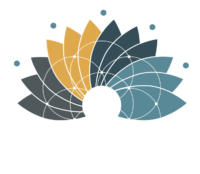

Today’s blog is the next in the Path of Healing Series where I’ve been guiding on ten essential steps for personal growth. Today I’ll be covering step eight, habituate, the part where the change has happened and has been integrated enough to become an involuntary habit that runs without us having to think about it. In this episode, you’ll understand the components of how good habits are made with practical exercises to support you in sustaining positive change on your personal growth path.
Key Topics Include:
- Understand the brain chemistry pathways related to habits.
- Learn the three key elements to form a new habit based on scientific research.
- Hear practical examples of positive and negative habits.
- Learn how to relate a negative habit with a more beneficial one.
- Experience a practice to discover your habits and make a conscious choice to create positive and lasting ones.
Understanding how habits form is important in being able to consciously participate in the process. Habits are behaviours that have become integrated into our systems to the point where we run them automatically, with minimum conscious awareness. Habits are conditioned into us through consistent repetition. This process involves the creation of neural pathways that become etched in our brain. Over time, with regular use, these neural net pathways solidify in our brain chemistry where all it takes is the first step to be triggered for the entire pathway to fire.
Habits are a way our systems stay efficient. Instead of creating new neural net pathways each time we do, think or act our brain catalogues the things we do on a regular basis and creates pathways that stay put over time. A trigger is placed at the start of the pathway that, when activated will run this saved, or habituated, pathway without the need for building a new one each time.
Now this can be both good and bad, depending on the trigger, pathway and resulting action. For example, if you have a habit of picking up your phone each time you get a notification this can negatively impact your focus, productivity and mental health. If, however, you have a habit of putting your phone on silent while you are doing a task or for a defined period of time, you will support your brain in being able to stay focused on the task and increase productivity.
Many people find creating healthy habits such as consistent exercise, nutrition diet or regular sleep to be difficult. But with the right information, tools, and practices you can make creating a new habit easier. And letting go of old habits that don’t serve your greatest good – effortless.
The key to forming a new habit and changing an old one is to focus your attention on three main aspects at the core of every habit: Cue, Routine and Reward. This is from research out of MIT (Massachusetts Institute of Technology) in Boston. The cue is the trigger that tells your brain to go into automatic mode and prompts the behaviour to unfold. The second is routine, which is the behaviour itself and the action you take. The last step is reward. It helps your brain determine if a particular habit loop is worth remembering or not. Generally, habits have immediate or delayed rewards. Habits with immediate rewards are easier to pick up and condition, whereas those with delayed rewards are more difficult to commit to and maintain. Think about how easy it is to check your smartphone compared to exercising more.
For example, Let’s use the social media example to explain further how the habit loop works.
Cue: Your device receives a push notification that someone likes or comments on one of your posts. The notification serves as a cue (or trigger) that tells you to check your account.
Routine: This is the actual behaviour. When you receive the push notification, you automatically check your social media account.
Reward: This is the benefit you gain from doing the behaviour that helps the brain figure out if this particular loop is worth remembering for the future. With social media, science shows one reward we get from this behavior is a dose of dopamine, a positive body chemical, each time a notification appears. The reward is also connected to discovering who has liked or commented on your post and engagement with followers by replying.
An example of a healthy behavior would go something like this:
Cue: The light tells your brain to go into automatic mode and which habit to use when leaving the room.
Routine: The actual behaviour of turning out the light.
Reward: A lower utility bill and help the world become more sustainable.
Replacing a negative routine with a healthier one become easier when you bring conscious awareness to these aspects of something you want to change. In this series, you have been guided to create an intention for what you want to release and what you want to create (see Power of Intention). If you’ve journeyed with me through this Healing Path series you’ve gone through the transformation and integration steps just prior to this step which has set you up to be able to access this new way of being more easily and with full self-empowered choice.
Now as you begin to apply this new way of being, bringing conscious attention to making it a habit is essential to support lasting change.
I’ll now outline a practice to help you identify, install and habituate a new way of being. Whether you have been reading the entire Healing Path Series or are have just joined for this episode, this exercise will work for you.
This practice will help you understand the habit-forming process, discover new aspects of yourself and allow you to make a conscious choice over what habits you keep and what habits you’re ready to let go of.
Feel free to have a notebook or journal handy if you want to write down your thoughts and ideas as you go along.
First, Identify the new way of being you want to habituate. This is your desired state intention.
Next, acknowledge what you want to release. Or, if you’ve worked the previous steps in the Healing Path Series, acknowledge what your present state intention was from step 1. It will be different now if you’ve worked through the steps. This was your present state intention that has now been transformed, allowing your desired state to become available to you.
Let’s start with outlining what habit you wish to automate based on your desired state experience. What are the thoughts behaviours and actions associated with the experience you want to create in life? Perhaps you want to adopt a habit of thinking positively from the time you wake up each day.
We now want to identify the cue or trigger, the routine or behaviour involved in the experience.
To start your day thinking positively, the cue would be waking up.
The routine would be to be aware of this first moment upon waking and create a positive though. Maybe something you are grateful for. What you are looking forward to in the day. An empowering statement like – for today I will look at the positive side of things.
Now, identify the reward of doing this. Thinking positively first thing can help you to feel more balanced mentally and emotionally. To stay calm and relaxed. And to remind yourself you have a choice of whether you want to focus on the positive or the negative for the day.
Studies show that your first thoughts and actions when you wake up will shape you day. So this is a great place to focus on creating new habits for positive change.
The reward part is super important and so I want to call out some ways you can bring more energy here so that your positive habit will be able to take hold more strongly. Many of the habits we want to create come with delayed rewards rather than instant ones. So it is important when doing this exercise to give the time needed to fully experience the reward. Rather than just holding it as an idea in your head.
So, for the positive thought upon waking habit installation, you must remain aware of how doing this every day over time makes you feel. At the very subtle levels of being. You may not get the immediate dopamine hit that checking your phone when it dings does, but by doing with the new behavior daily for at least 21 days will create a solid new neural network in your brain that automates this habit.
This is where some people find it difficult to leave bad habits alone and put the effort in to crete a new one. Many of our bad habits are linked to immediate gratification. So the reward comes quickly after the action. Being aware of these immediate responses that may soothe you in the moment but in the long term they cause damage can help to reframe your attitude about putting in the consistent effort to do the positive behaviours as these will serve you in the future in a steady, supportive and empowering way.
This exercise also works to identify the structure of a bad habit. Identify your trigger. What is the thing that kicks off the habituated response? An overloaded to-do list causes anxiety, for example. Then identify the action of the habit – which is creating the to-do list and adding items to it. The result is overwhelm and anxiety which diminishes productivity, self-esteem and balance. Remember the last step in creating a positive habit needs to be a reward. So to change a negative habit into a positive one put some attention on a positive feeling associated with the action.
How can the action of the to-do list be done so that it is attached to a reward? Perhaps not having a list more than 5 items long so that it feels doable. Or putting a prioritisation step in after the list is generated so that you can easily identify what is next to be done and upon doing it your reward is a sense of accomplishment and pride.
I hope you enjoy exploring your habits and are not equipped with the information and practices to be able to habituate positive change in your life.
You can enjoy listening to this article on a Healing Codes Podcast episode by clicking on the link below.
_____________
Find out more about Consciousness Medicine.
Upcoming courses, workshops and 1:1 sessions.
Sign up for my free e-newsletter from the homepage www.consciousness-medicine.com.
Stay Connected on Social Media:
Facebook: www.facebook.com/CentreforConsciousnessMedicine
Instagram: www.instagram.com/wellnesswisdomwithjulie
Linked In: www.linkedin.com/in/julie-williams-cxmed

